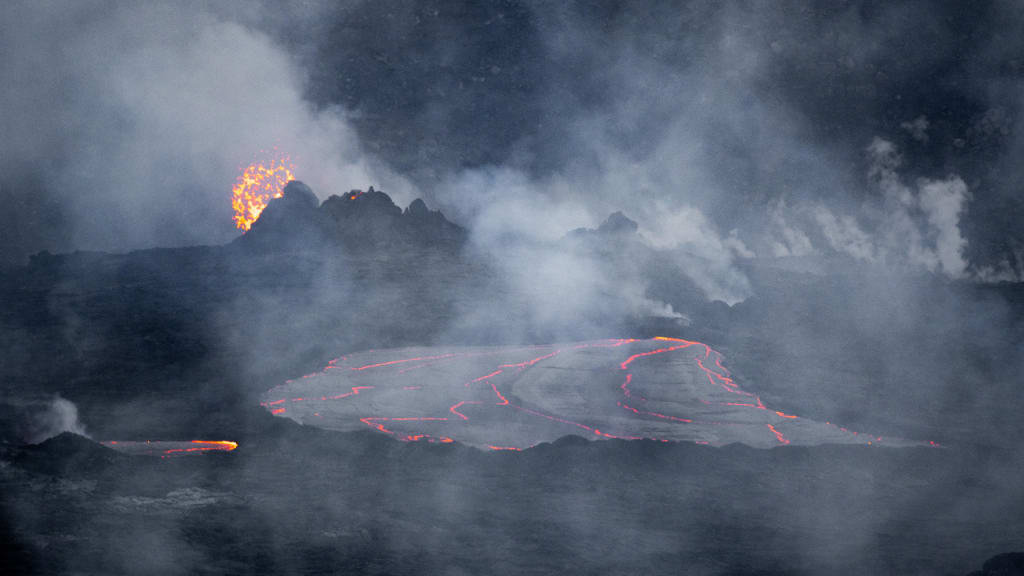Eruption Under the Pacific Ocean Will Make the Water Fizz
Emission Under the Pacific Sea Will Make the Water Bubble

Emission Under the Pacific Sea Will Make the Water Bubble
The Remote ocean Show Unfurls
In the secretive profundities of the Pacific Sea, an unprecedented occasion is fermenting, promising a display not at all like some other. A volcanic ejection is set to happen underneath the sea's surface, and it's supposed to make the water bubble like a monster, regular soft drink wellspring. This peculiarity isn't just an enamoring show of nature's crude power yet additionally a basic area of study for researchers looking to grasp the elements of submerged volcanism and its more extensive ramifications.
The Science Behind the Bubble
Submerged volcanic ejections happen along structural plate limits, where magma from the World's mantle penetrates the sea floor. Dissimilar to earthbound volcanoes, these submerged ejections are disguised underneath tremendous fields of water, making novel circumstances. At the point when magma comes into contact with seawater, a progression of responses follow, prompting the development of volcanic gases, including carbon dioxide, sulfur dioxide, and water fume.
The bubbling impact is essentially because of the fast arrival of these gases. As magma rises and tension reductions, gases broke down in the magma are delivered dangerously, framing bubbles. The superheated water around the ejection site can arrive at temperatures over 400 degrees Celsius, causing fast bubbling and a fierce combination of steam and gas bubbles. This makes a foamy, bubbly scene, looking like the bubble in a carbonated beverage.
Biological Effect and Potential open doors
The ramifications of such emissions are significant. They can modify nearby marine conditions, affecting water science, temperature, and natural action. The abrupt convergence of minerals and supplements can make focal points of organic efficiency, cultivating extraordinary environments around aqueous vents. These vents, plentiful in minerals, support assorted networks of living beings, incorporating extremophiles that flourish in brutal circumstances.
Also, the investigation of submerged emissions offers experiences into the topographical cycles forming our planet. By inspecting these occasions, researchers can acquire a superior comprehension of structural developments, ocean bottom spreading, and the development of new maritime outside layer. This information is pivotal for anticipating geographical risks, for example, tremors and torrents, which frequently go with volcanic action.
Innovative Wonders about Work
Noticing and concentrating on submerged emissions present critical difficulties because of the outrageous profundities and cruel circumstances. In any case, progressions in innovation have upset this field. Independent submerged vehicles (AUVs) and remotely worked vehicles (ROVs) furnished with high-goal cameras and sensors permit researchers to screen ejections progressively. These robots can endure tremendous tensions and give significant information on the physical and substance properties of ejections.
Moreover, ocean bottom observatories, outfitted with a variety of instruments, constantly screen volcanic movement. These observatories can identify seismic signs, temperature changes, and gas outflows, offering a thorough perspective on the eruptive interaction. Such advances upgrade how we might interpret submerged volcanism as well as work on our capacity to expect and alleviate its effects.
The More extensive Ramifications
Past the quick logical and environmental effects, submerged ejections have more extensive ramifications for our planet. They assume a urgent part in the worldwide carbon cycle, impacting barometrical carbon dioxide levels. Volcanic emissions discharge huge measures of carbon dioxide, an ozone harming substance, into the climate. Notwithstanding, submerged emissions likewise advance the sequestration of carbon in the profound sea, where it can stay caught for centuries.
Understanding these cycles is imperative with regards to environmental change. By concentrating on submerged ejections, researchers can refine models of the World's carbon cycle and further develop forecasts of future environment situations. Moreover, investigating these remote ocean conditions can rouse new advances and answers for carbon catch and capacity, adding to worldwide endeavors to alleviate environmental change.
A Display of Nature's Power
As the Pacific Sea gets ready to disclose its bubbly display, we are helped to remember the monstrous power and intricacy of our planet. Submerged emissions, stowed away from plain sight, are a demonstration of the powerful powers at play underneath the sea's surface. They offer a window into the World's internal functions and a wellspring of marvel and motivation.
Before very long, as researchers and lovers the same anxiously anticipate this normal occasion, the expectation develops. The effervescing waters of the Pacific won't just enrapture our minds yet in addition extend how we might interpret the complex and steadily developing embroidered artwork of life and geography on The planet.
About the Creator
robail shahzadi
I've been writing since I learned how, but those have been lost and will never see daylight (I hope).
Excellent work. Looking forward
If you enjoy my work feel free to like but also never hesitate to share. Thank you for your patronage. .
Enjoyed the story? Support the Creator.
Subscribe for free to receive all their stories in your feed. You could also pledge your support or give them a one-off tip, letting them know you appreciate their work.






Comments
There are no comments for this story
Be the first to respond and start the conversation.